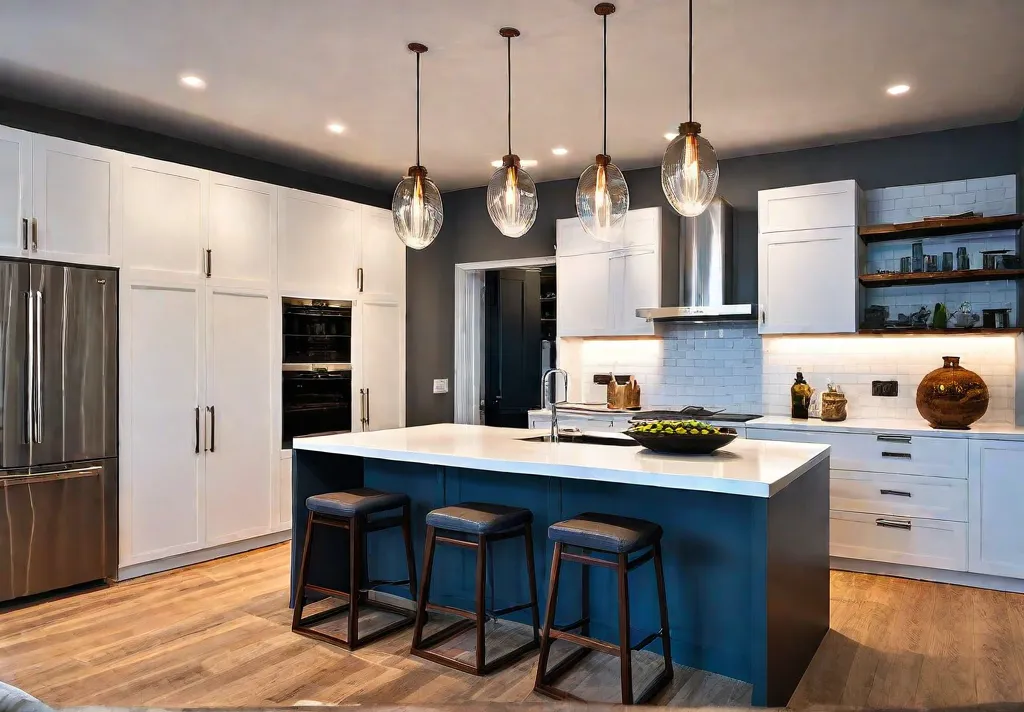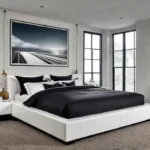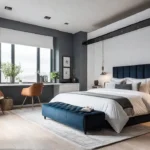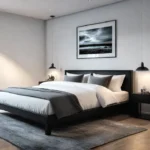Picture this: You’ve just finished a major kitchen renovation. The cabinets are gleaming, the countertops are sleek, and the appliances are state-of-the-art. But something’s missing. The space doesn’t feel as warm and inviting as you had hoped. What could be the issue? The answer might surprise you—it’s the lighting.
Believe it or not, lighting plays a crucial role in setting the tone and mood of your kitchen. In fact, according to a survey by the American Lighting Association, 60% of homeowners say that lighting is the most important factor in creating a warm and inviting kitchen. That’s a pretty staggering statistic.
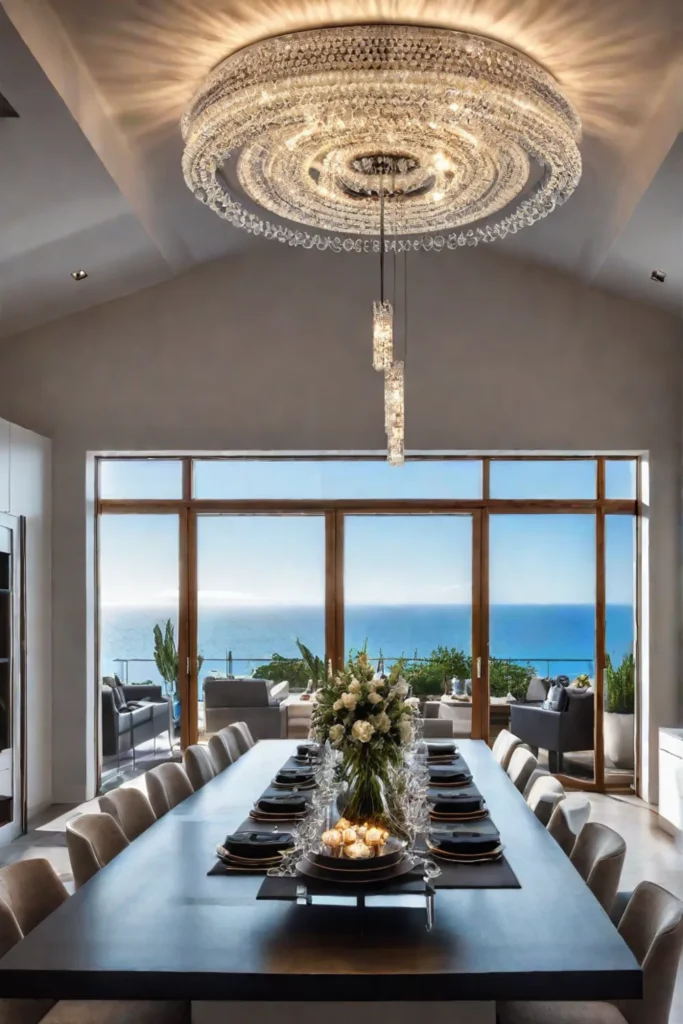
But don’t worry; with the right lighting strategy, you can quickly transform your kitchen from drab to fab. In this practical guide, we’ll explore the different ways you can use lighting to elevate your kitchen decor and create a beautiful and functional space.
The Importance of Lighting in Kitchen Design
Lighting is the unsung hero of kitchen design. It’s not just about illuminating the space—it can actually impact the overall aesthetic and functionality of your kitchen. Proper lighting can make a small kitchen feel more open and spacious, while poor lighting can make a large kitchen feel cramped and uninviting.
But that’s not all. Lighting also plays a crucial role in enhancing the visibility and functionality of your kitchen. Imagine chopping vegetables under dim, flickering lights – it’s a recipe for disaster (pun intended). On the other hand, strategic placement of task lighting can make food preparation a breeze.
And let’s not forget about the impact of lighting on your kitchen’s overall ambiance. Warm, soft lighting can create a cozy, inviting atmosphere, perfect for casual meals and gatherings with family and friends. On the other hand, brighter, more focused lighting can give your kitchen a sleek, modern vibe.

Did you know that lighting accounts for up to 15% of a home’s energy consumption? That’s a pretty significant chunk, don’t you think? But with the right lighting strategy, you can elevate your kitchen’s design and improve its energy efficiency.
Choosing the Right Light Fixtures
When it comes to kitchen lighting, the options are endless. From pendant and recessed lights to undercabinet lighting and chandeliers, there’s a fixture for every style and budget. But how do you know which ones are right for your kitchen?
Well, it all comes down to balancing functionality and aesthetics. Sure, that pendant light might look gorgeous, but does it provide enough task lighting for your meal prep? And while those recessed lights might give you the ambient glow you’re going for, do they complement the overall design of your kitchen?
One of the most popular choices for kitchen lighting is the trusty pendant light. These fixtures are versatile, providing both task and ambient lighting, and they come in a wide range of styles to suit any decor. When selecting pendant lights, consider the height and spacing to ensure they provide adequate task lighting without overwhelming the space.

Another key consideration is energy efficiency. After all, you want your kitchen to look great but don’t want to break the bank on your utility bills. That’s where LED lights come in. These energy-efficient bulbs can last up to 50,000 hours, significantly longer than traditional incandescent bulbs. Plus, they come in various color temperatures so that you can create the perfect ambiance for your kitchen.
Layering Lighting for Maximum Impact
Okay, you’ve got your pendant and recessed lights—now what? The secret to creating a truly stunning and functional kitchen lighting scheme is all about layering.
Layering lighting combines task, ambient, and accent lighting to create a well-rounded and balanced design. Think of it like a symphony – each instrument (or, in this case, each type of lighting) has its role to play, but when they come together, the result is pure magic.
Let’s start with task lighting. This is lighting designed to illuminate specific work areas, like countertops or kitchen islands. Undercabinet lighting is a great example of task lighting—it provides a focused beam of light that makes chopping, dicing, and prepping a breeze.
Next, you’ve got your ambient lighting. This general illumination sets the overall mood and atmosphere of your kitchen. Pendant and recessed lights are perfect, providing a warm, even glow throughout the space.
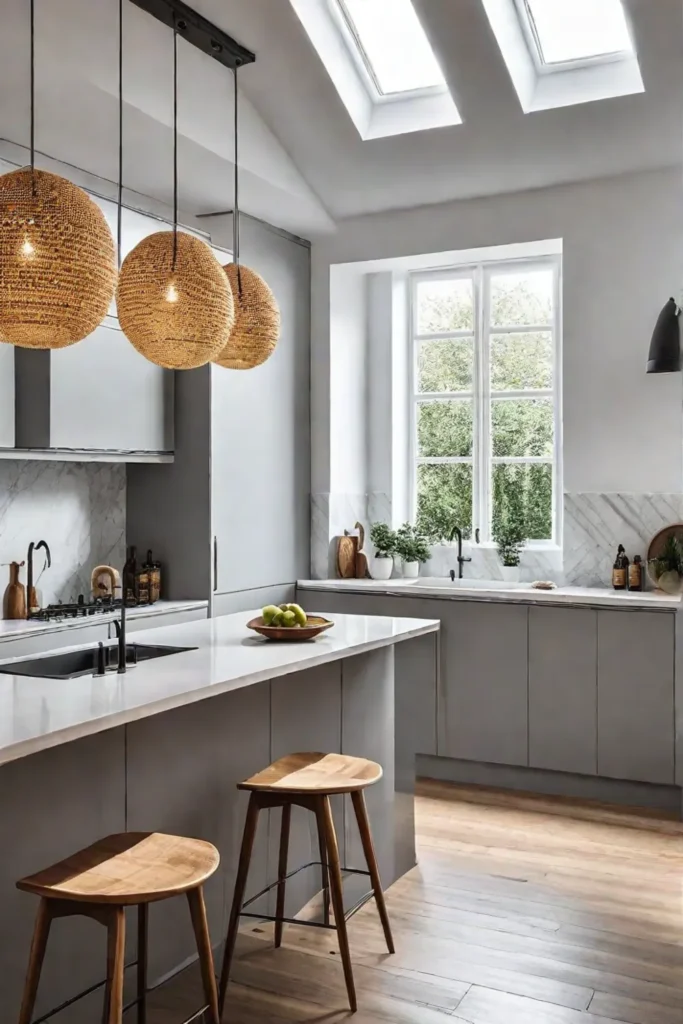
Finally, there’s accent lighting. This lighting highlights specific design elements, like a beautiful backsplash or a piece of artwork. Track lighting or spotlights are great options for accent lighting, as they allow you to direct the light precisely where you want it.
By layering these different types of lighting, you can create a kitchen that’s not only functional but also visually stunning. And the best part? It’s all about finding the right balance. Too much task lighting can make the space feel sterile, while too much accent lighting can be overwhelming. It’s all about finding that sweet spot.
Integrating Lighting with Kitchen Design
You might be thinking, “Okay, I get the whole layering thing, but how do I ensure my lighting complements my kitchen design?” Well, my friend, that’s where the magic happens.
Lighting shouldn’t be an afterthought in your kitchen design—it should be an integral part of it. Think about it this way: your lighting fixtures are like the jewelry of your kitchen, and you want them to complement the overall aesthetic.
For example, if you’ve got a modern, minimalist kitchen, you might opt for sleek, streamlined pendant lights or recessed lighting. On the other hand, if your kitchen has a more traditional, farmhouse-inspired vibe, you might want to incorporate vintage-inspired wall sconces or a statement chandelier.
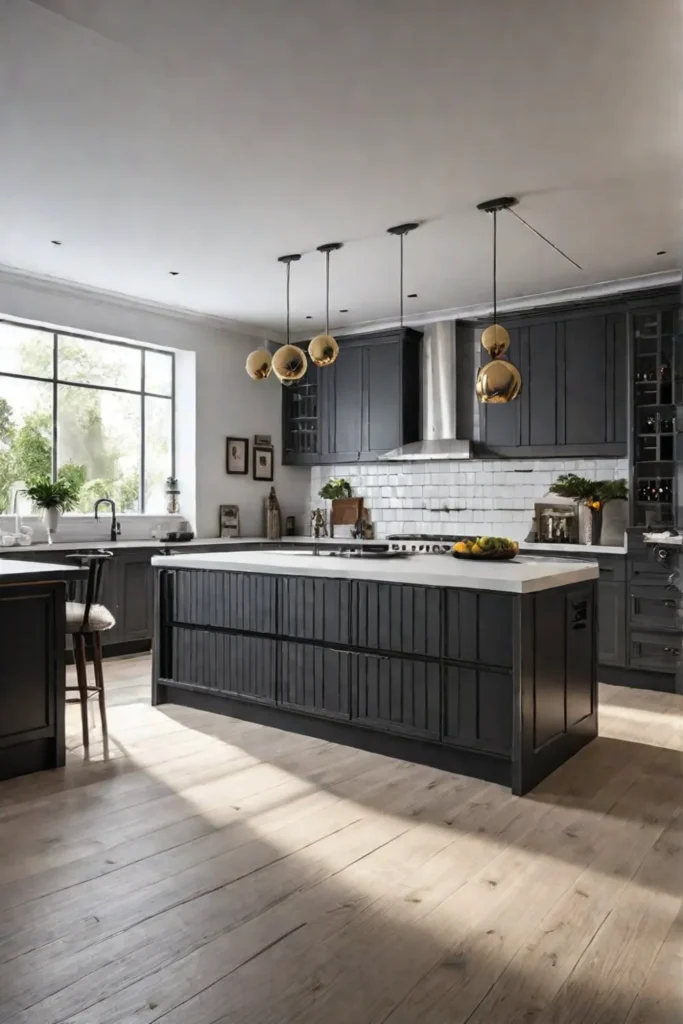
It’s not just about the fixtures themselves—it’s also about how you integrate them into your kitchen’s design. Maybe you’ve got a beautiful backsplash that you want to highlight with strategic accent lighting. Or perhaps you wish to use undercabinet lighting to create the illusion of a larger, more open kitchen.
The key is to consider your lighting an extension of your kitchen’s overall design rather than just a functional afterthought. When you do that, you’ll end up with a space that’s not only beautiful but also highly functional.
Lighting for Different Kitchen Zones
Now, let’s talk about the different zones in your kitchen and how you can use lighting to define and highlight them.
Think about it – your kitchen is probably made up of several distinct areas, each with its unique purpose and lighting needs. You’ve got your cooking zone, prep zone, dining zone, and maybe even a cozy little nook for sipping your morning coffee.
It’s all about finding the right balance when lighting these different zones. In the cooking zone, for example, you’ll want to focus on task lighting. The pendant or recessed lights over the stove and countertops can make food prep a breeze.

In the dining zone, on the other hand, you might want to go for a more ambient, cozy vibe. A statement chandelier or a row of pendant lights can create a warm, inviting atmosphere perfect for casual meals and gatherings.
And don’t forget about those little nooks and crannies. Accent lighting, like track lighting or wall sconces, can help highlight specific design elements and create a sense of coziness and intimacy.
By carefully considering the unique lighting needs of each zone in your kitchen, you can create a cohesive and visually stunning space that’s both beautiful and highly functional.
Incorporating Smart and Energy-Efficient Lighting
As if elevating your kitchen decor with lighting couldn’t improve, there’s another game-changer you should consider: smart and energy-efficient lighting.
Smart lighting systems, like those that voice commands or smartphone apps can control, offer a new level of convenience and customization. Imagine adjusting the lighting in your kitchen with a simple voice command as you’re carrying a heavy pot of pasta to the sink and or being able to set the mood for a cozy dinner party with the tap of a button on your phone.
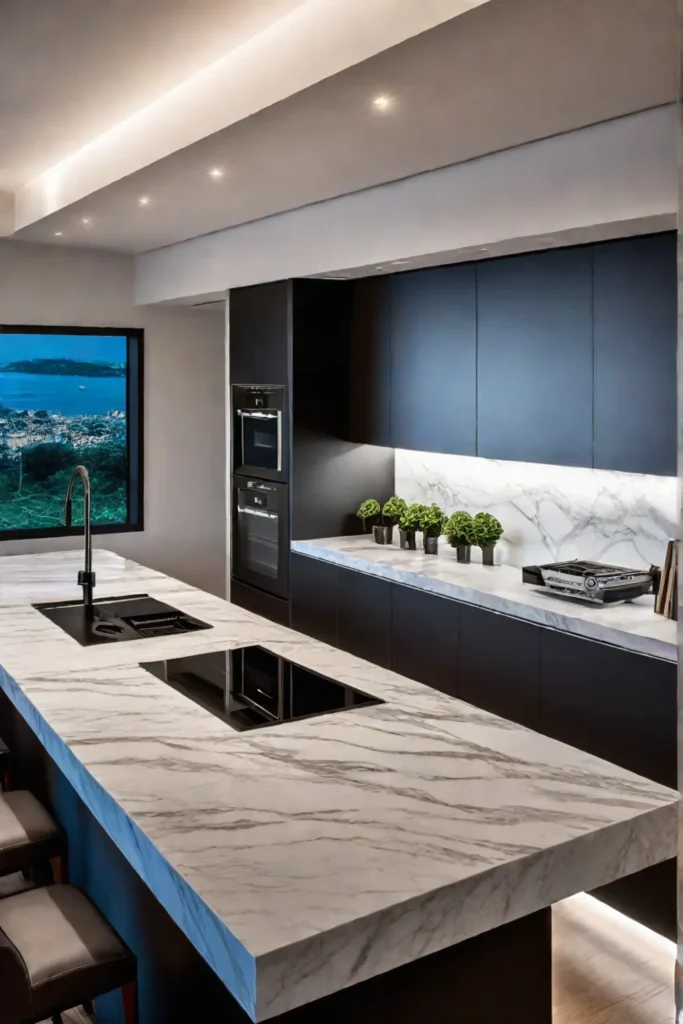
And let’s not forget about the energy-saving benefits of these smart lighting systems. According to a U.S. Department of Energy study, smart lighting can save homeowners up to 30% on their energy bills by automatically adjusting to occupancy and natural light levels. That’s a pretty impressive statistic.
But smart lighting isn’t the only way to make your kitchen more energy-efficient. LED lights, for example, can last up to 50,000 hours—that’s over five years of continuous use! They use significantly less energy than traditional incandescent bulbs, which means lower utility bills and a smaller carbon footprint.
So, whether you want to add a touch of high-tech convenience or be more eco-conscious, incorporating smart and energy-efficient lighting into your kitchen design is a no-brainer.
Conclusion
Lighting is the unsung hero of kitchen design, and with the right strategy, you can transform your kitchen from drab to fab in no time. By understanding the importance of layering different types of lighting, selecting the right fixtures, and integrating lighting into your overall design, you can create a kitchen that’s not only beautiful but also highly functional.
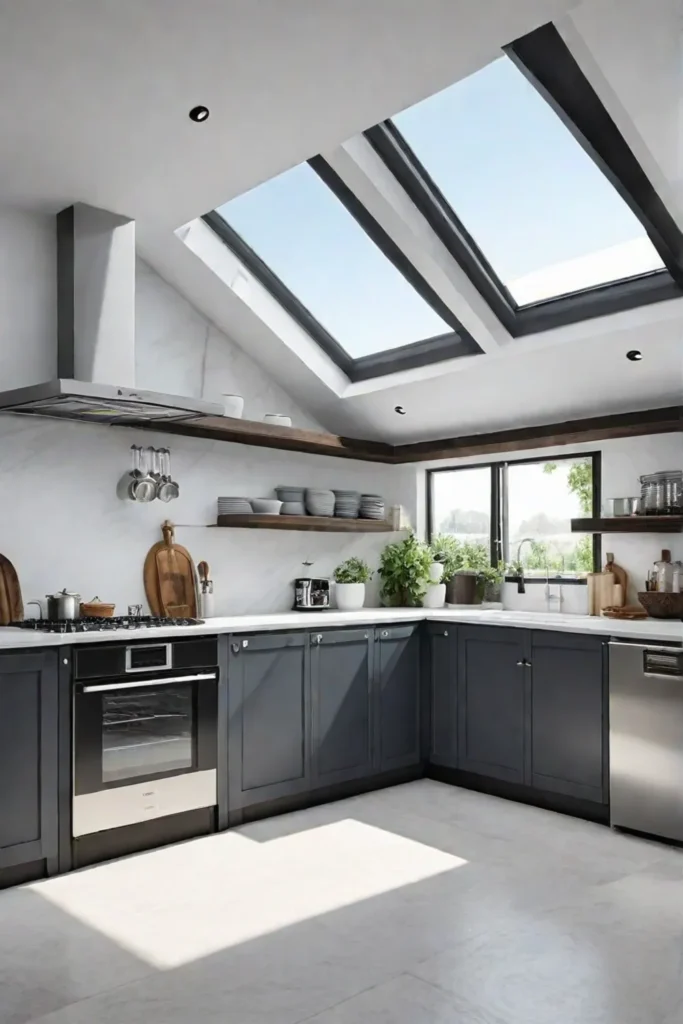
Remember, the key is to consider your lighting an extension of your kitchen’s overall design rather than just a functional afterthought. When you do that, you’ll have a warm, inviting space that reflects your style.
So, what are you waiting for? Grab your toolbox and get ready to elevate your kitchen decor with lighting. Your dream kitchen is just a few light fixtures away!
